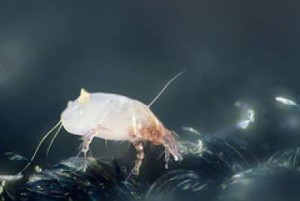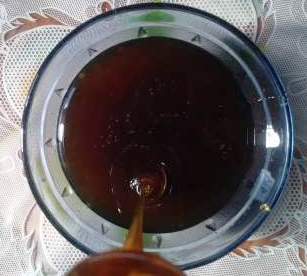
Dust mite allergy is nothing but an allergic reaction to some tiny bugs that are most commonly found to be living in dust. These dust mites may be present even in our common household dust. Dust mite allergy is also known simply as dust allergy. Dust mite allergy symptoms may include mild to moderate sneezing and a runny nose. Sometimes, people with this allergy could also experience certain symptoms of asthma; few such symptoms may include wheezing and experiencing difficulty in breathing.
Dust mites are invisible to the naked eye and can only be seen under a microscope. The diet of dust mites mainly consists of the dead skin that humans shed on an everyday basis. Dust mites prevail more in warm and humid environments. In common households, dust mites usually are found in furniture upholstery, carpets, mattresses etc.
Dust Mite Allergy Symptoms
Nasal irritations symptoms such as sneezes, runny nose, watery eyes, itchy eyes, congestion, itchy throat and nose, mild cough and wheezing, sinusitis pains and similar facial pains etc.
Sometimes, the symptoms may also lead to asthma which could have symptoms such as breathing difficulty, chest pain while breathing, heavy wheezing, heavy coughing, snoring and difficulty in breathing while sleeping etc.
Some of the dust mite allergy symptoms may be mistaken for the symptoms of common cold, for example a runny nose and/or sneezing. Mostly common cold symptoms cure in a week. If such symptoms exist for a longer time period than one week, it could mean that it is a dust allergy.
What Causes the Dust Allergy or Dust Mite Allergy?

Allergies occur when our body’s immune system reacts negatively to a foreign body. In this case, the foreign body or commonly called as allergen are dust mites.
The immune system produces a certain kind of proteins known as antibodies. These antibodies are the ones that fight against the foreign bodies. In case of an allergy, the immune system’s antibodies wrongly identify a particular foreign body/allergen as something harmful, even though it actually isn’t.
In such a scenario, when you come in contact with that particular allergen, the immune system reacts and produces an inflammation in the body. Continuous exposure to the same allergen can cause persistent inflammation and could ultimately weaken the body’s immune system.
The causes of dust mite allergy can be:
Contact with dust mites. Though dust mites can cause allergies to pretty much everyone, the risk is greater for children.
Sometimes allergies are hereditary. If there is a family history of dust allergy, there is a greater chance of you developing it.
When To See A Doctor?
The primary signs of dust mite allergy and that of cold are same, like ,runny nose and sneezing. so, it is quite difficult for you to find out whether you are suffering from an allergy or cold. If the symptoms continue to happen even after a week then this could be allergy and this calls for consultation with the doctor.
Similarly, if you are witnessing problems like nasal congestion, difficulty in breathing or other respiratory problem then immediately consult your doctor.
Dust Mite Allergy Treatment
The best treatment for dust mite allergy is to avoid contact with dust mites/dust as much as possible. Control the dust in your houses and limit your exposure to dust when outside of the house. If proper precautions are taken to minimize dust exposure, the chances of developing/increasing dust allergy is minimal.
In case of a severe reaction, the allergy can be treated by taking medications such as antihistamines to relieve the dust allergy symptoms such as sneezing and runny noses.
Nasal sprays can be used to relieve dry and itchy noses and can control sneezing up to some extent. Nasal sprays contain corticosteroids which also help to reduce redness and inflammation.
Decongestants can be used to shrink inflamed tissues in your nasal passages and make it easier to breathe.
There is another kind of treatment for allergies called Immunotherapy. Immunotherapy means to create immunity in the body for a certain type of allergen. In this kind of treatment, the body is presented with small doses of the reactive allergen over a period of time; this helps the body to develop antibodies against the allergen. If done correctly, over a period of 6 to 12 months, the body becomes immune to the allergen.
Home Remedies for Dust Allergy
- Use dust proof bed covers, blankets, mattresses and other furniture upholstery. This will prevent accumulation of dust.
- Wash your upholstery and bed covers regularly. Use warm to hot water to wash them and sundry. This will kill most of the dust mites.
- Since dust mites thrive in humid environments, keep your home humidity to a controlled level. Use dehumidifiers in your home to keep the moisture content low.
- Mop floors regularly with damp mops rather than dry ones, this will pick up dust more effectively.
- Use a vacuum cleaner regularly to clean dust from your carpets. Prevent dust gathering in carpets to prevent the dust allergies.
How to Cure Dust Allergy Naturally?

There are a variety of ways to cure dust allergies naturally or at least to relieve many of the symptoms. Some methods include drinking apple cider vinegar mixed with water. One teaspoon apple cider vinegar in a glass of water every day can help cure many allergies including dust allergy.
Raw honey is also said to be excellent in treating dust allergy. One teaspoon of raw honey taken every day can help reduce dust allergy to a large extent.
Nettle leaves are another source of natural anti allergic medication. You can use nettle leaf to make tea and consume it to prevent and treat dust allergy.
Last but not the least; nasal rinses can help in relieving dust allergy. Prepare a saline solution with sea salt and distilled water, pour it in your nose through one nostril and let it drain out of the other nostril. This will clean out the nasal passages and cure dust allergy and its symptoms.
There may be many ways to treat dust allergy but the best treatment of all is to prevent dust in the first place.

